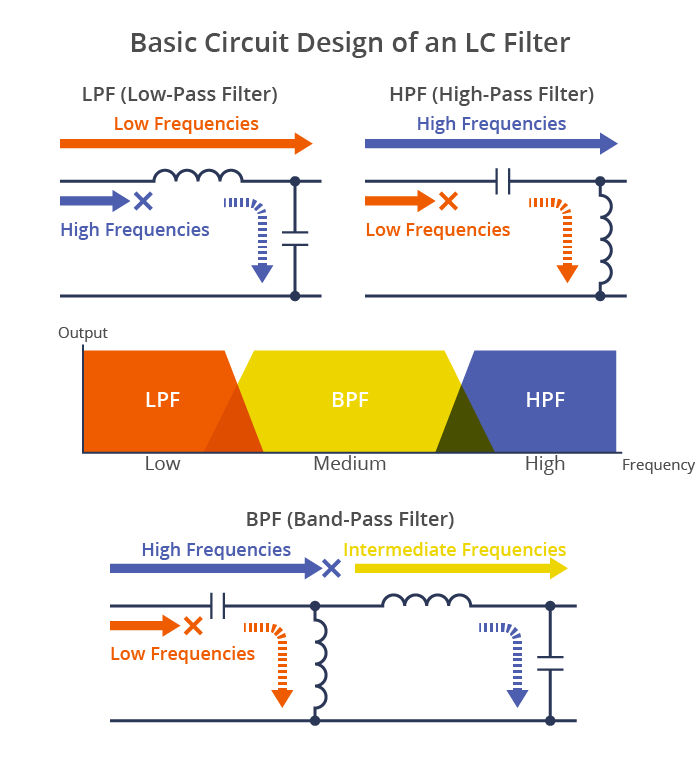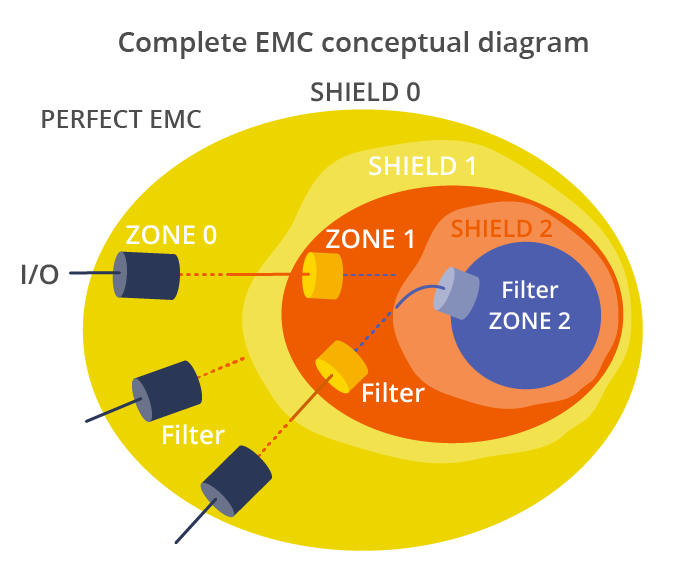Intro to EMC Topics
Practical Applications—Part 2: Electrified Cars are Packed with Noise Problems
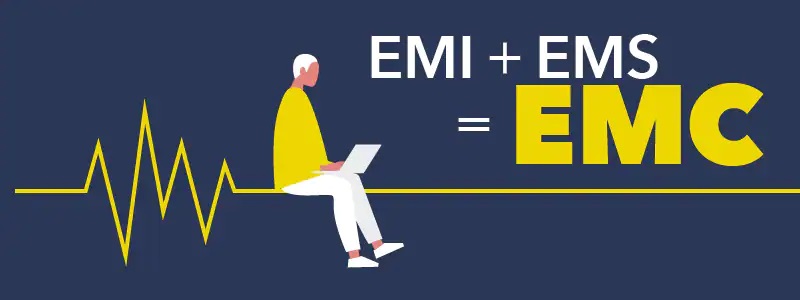
EMC (Electromagnetic Compatibility) is the concept of addressing both EMI (Electromagnetic Interference, or emission problems) and EMS (Electromagnetic Susceptibility, or immunity problems). The problem is complicated because radio waves meant for one purpose could become noise for others. Noise problems that hit close to home and are potentially deadly are those that involve cars, which are increasingly becoming electrified. Better safety, comfort, and energy savings in automobiles are unachievable without solving noise problems.
Noise interference on airplanes could lead to major accidents
When you board an airplane, you are asked to turn off your smartphone. This is because the radio waves emitted from smartphones can interfere with the instruments and communication devices in the cockpit. Airplanes have antennas for communication with the outside world, such as talking to air traffic control or receiving GPS satellite signals. Radio waves from smartphones may leak through the cabin or windows and affect these antennas. They may also interfere with the large swaths of electrical signal cables onboard, generating noise and causing adverse effects. The EMS performance of airplanes has improved in recent years, and some planes even allow the use of smartphones, including during takeoff and landing, as long as they are switched to airplane mode. This is because they refrain from emitting radio waves when placed in airplane mode.
Even electric razors, which are not electronic devices, are prohibited from use during takeoff and landing because their motors radiate noise. Inadvertent use of these devices does not necessarily disturb the flight. Still, airplane instruments are highly sensitive, and every precaution must be taken to prevent possible electromagnetic interference (EMI) from any device.
On many airplanes today, movements of the yoke and other controls are transmitted as electrical signals through wires to drive actuators that move wing surfaces and adjust engine throttles. One reason behind the transition to this system was that traditional hydraulic mechanisms added substantial weight to aircraft. This system is called fly-by-wire—, and since it works well with computers, autopilots have also been improved. However, if a problem were to occur in flight, you couldn’t simply pull over like a car and troubleshoot. This is why many layers of redundancy and noise countermeasures are thoroughly implemented in an aircraft for safety. What’s more, fly-by-light technology—which replaces electrical signals with optical signals transmitted through fiberoptic cables—is already under development. This is one example of a system that is inherently immune to electromagnetic noise (EMS).
Systems similar to fly-by-wire on airplanes are crossing over to cars. Brakes and steering, controlled by hydraulic pressure in the past, are now being driven electrically by ECUs (Electronic Control Units); these systems are collectively called X-by-wire. This technology is expected to be de
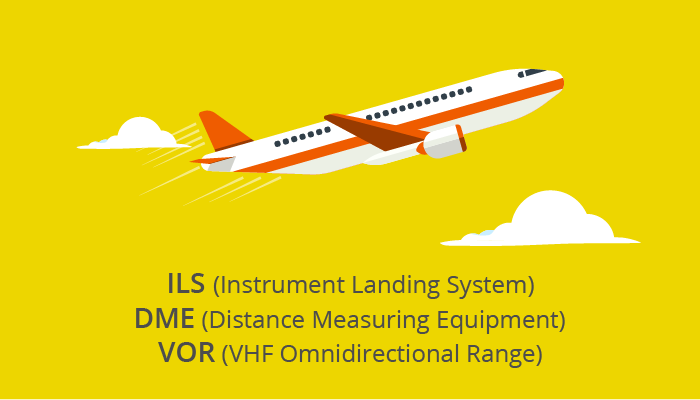
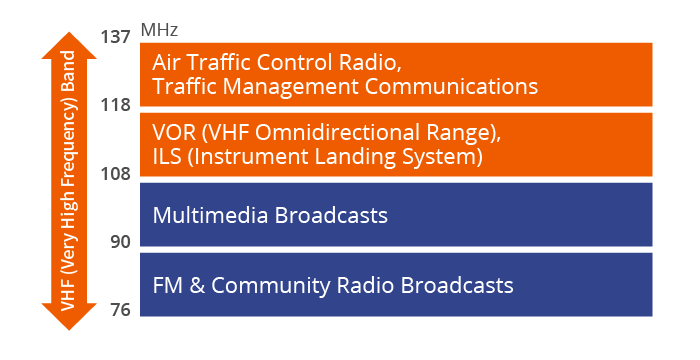
The VHF band (30 to 300 MHz), used for aircraft radio navigation systems, is a highly congested frequency range shared by multimedia broadcasting, FM radio, fire department communications and amateur radios.
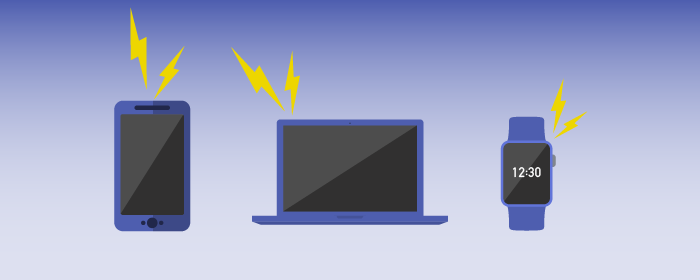
Local oscillation signals from FM radios and noise radiating from digital devices may interfere with the radio navigation of aircraft.
Disparate electronic control systems now linked through onboard networks
Around 10 to 70 ECUs (Electronic Control Units) can be found in today’s highly electrified automobiles. These ECUs are interconnected through onboard networks, commonly classified into powertrain (drive), body, multimedia, and safety systems (airbags, etc.).
Onboard networks were originally introduced as a means to reduce the weight of vehicles. In the past, electronic control systems for cars were developed independently of one another. The total volume of wires grew rapidly, taking up precious space and weighing tens of kilograms. To solve this problem, onboard networks like CAN-BUS were created to consolidate heavy bundles of wires (called harnesses) into a single one, much like office networks. However, while CAN-BUS is very reliable, it lacks high-speed support. In response, FlexRay was introduced for use with powertrain systems in the X-by-wire era. For multimedia applications, systems like MOST and IEEE1394 have been in use, but Ethernet has seen adoption in recent years because of its high speeds, simplicity, and ease of collaboration with the cloud due to its affinity with IP. Essentially, it’s the “broadband-ization” of onboard networks. These networks are expected to connect to external networks and be utilized for accident avoidance systems and inter-vehicle communications in the future.
ASVs (Advanced Safety Vehicles) are also progressing step by step toward practical use. By simply specifying the destination, the vehicle will drive autonomously without any steering wheel or pedal inputs, avoiding collisions with other vehicles and route deviations along the way. It may not be too far in the future that we could travel to our destination while taking a nap. Even though automobiles are ground vehicles, they arguably require more advanced noise countermeasures than aircraft. This is because the electromagnetic environment surrounding cars is far more hostile than that of airplanes.
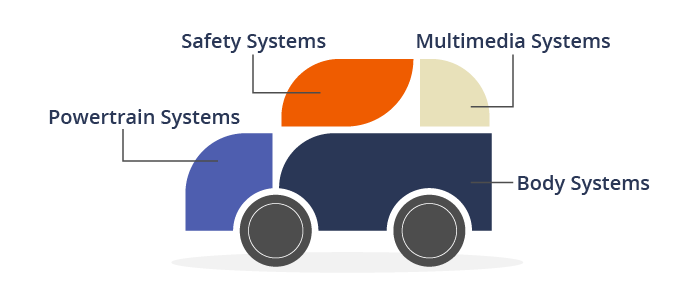
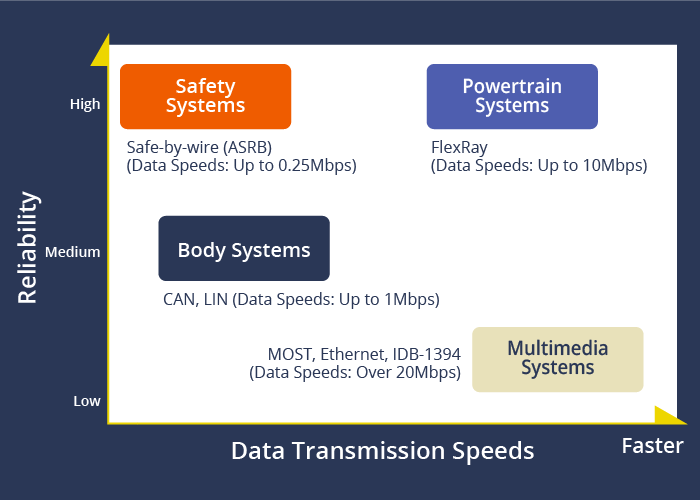
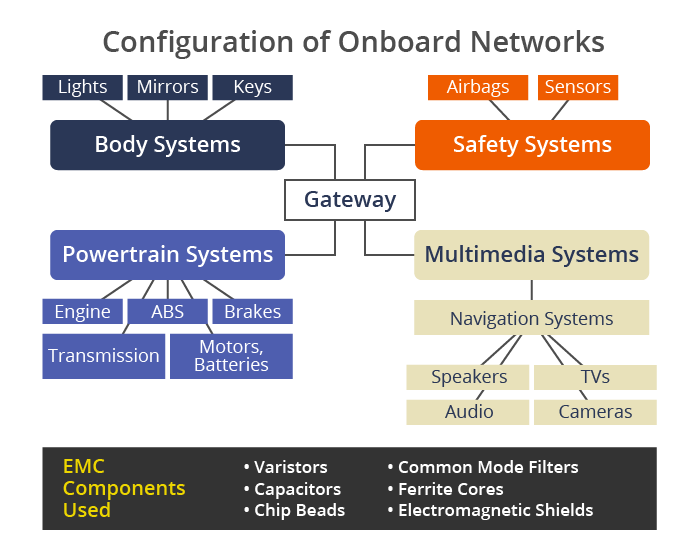
TDK’s comprehensive EMC solutions support ITS and telematics
Automobiles travel while packing an engine and dozens of micro-motors—all of which are sources of noise—into a small space. ECUs and onboard networks must be protected from such noise to prevent malfunctions. Noise can also infiltrate the vehicle from outside. Vehicles may be exposed to strong electromagnetic fields when passing near electrical power facilities or be approached by trucks using illegal personal radios. In one accident, a car with an automatic transmission had started and stopped haphazardly, which was later determined to be caused in part by radio waves emitted by an illegal amateur radio station. Interference in car radios isn’t rare, either.
On the other hand, the multimedia capabilities of onboard systems like TVs and video are advancing dramatically. The use of radio waves while in transit is also expanding, including smartphones (except for use by the driver while driving, which is prohibited), GPS navigation systems, ETC (Electronic Toll Collection), and dashboard cameras. The car is now a mobile living room or an office. It wouldn’t be an exaggeration to say that most of the noise problems in the electronics age are represented in an automobile.
Among the more than 10,000 automotive components that are said to compose a single car, the ratio of electronic components is rising year by year. Electronic components for automobiles have far more demanding reliability requirements than those for ordinary electronic devices, such as resistance to vibration and water—in addition to being operable in a wide range of temperatures, from the frigid cold to the scorching hot.
Achieving both safety and comfort in cars requires both EMI and EMS measures—in other words, EMC technologies. TDK’s EMC components have earned a high reputation in the automotive electronics market by combining core technologies: materials, processes, and evaluation and simulation. Services such as noise measurement and immunity evaluation using high-performance anechoic chambers also greatly improve car safety and comfort.
Noise control must be considered throughout the entire process of design, development, evaluation and countermeasures—not as after-the-fact remedies. TDK’s comprehensive EMC solutions are rooted in this philosophy, and are powerful enablers of automotive electronics for the ITS and telematics era.
TDK is a comprehensive electronic components manufacturer leading the world in magnetic technology



